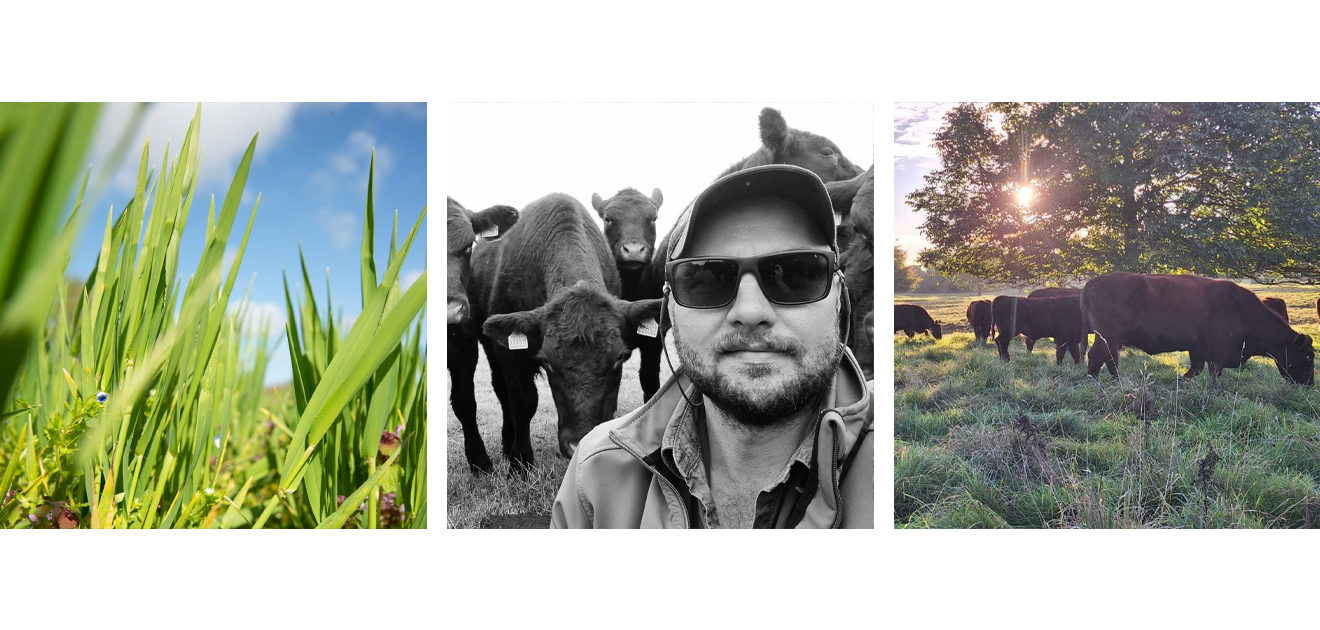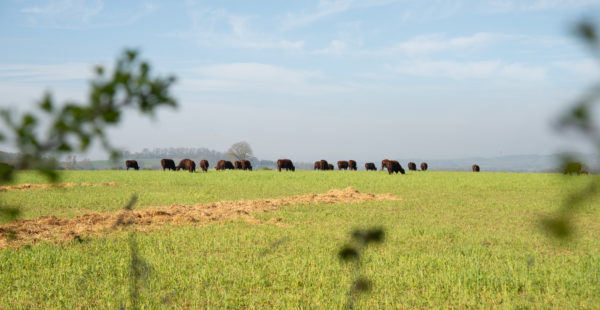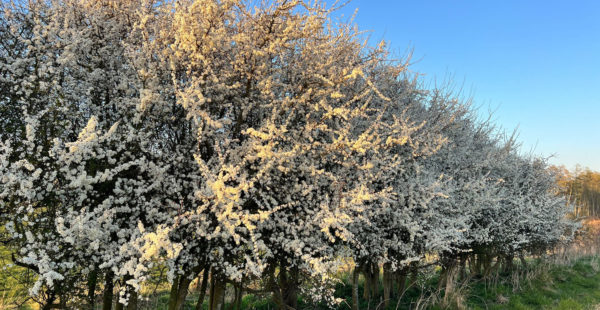Preparing the Herd for Winter: a Catch-up with Philip
We hope we find you well and that the sustained period of drab anticyclonic gloom that defined early November hasn’t dampened your mood. The Sun hasn’t exactly got his hat on at the time of writing but there’s the odd glimpse of blue sky out there and the weekend is set fair but cold. Temperatures are set to fall markedly over the next few days, with a forecast range of 4C to -2C by the middle of next week.
With meteorological winter only a fortnight away, we caught up Herd Manager Philip Taylor to hear all about a successful season of romance and what it takes to prepare our Lincoln Reds to thrive on the land in all weathers.
“On 1st November, the cattle came off the summer pasture,” said Philip. “They’re now on the winter system, grazing standing hay that’s been resting for 6-12 months, supplemented by sileage bales. That system will last until 1st May. The herd is in good condition heading into winter and the calves are big and heavy.
“Everything depends on the weather but we make sure the herd gets as much energy-rich food as possible within our farming system. We work on 18-month timescales and have to estimate the availability of dry matter and be ready to adapt to very wet or very dry weather. A cow needs to eat 3% of her bodyweight in grass every day and that’s our benchmark.
“The mating season went very well. The bulls go in from mid-July for 63 days – or three cycles – ending in mid-September. That means the calving begins between late April and early May. The idea is we give the cows as much fresh, new-growth grass as possible to stimulate milk for the calves. An earlier mating season would mean calving in cold, wet midwinter weather, which isn’t ideal for either the cattle or the herd team.
“We scanned our cows and 101 out of 109 are in calf, a really good pregnancy rate of 93%. Our cows stay in family groups and will go to the same bull next year. This helps us to avoid mixing direct bloodlines. Throughout the summer, we work hard to get the cows in the best condition to conceive. There’s an optimal weight range; there’s a correlation between condition and fertility and they can’t be too fat or too lean. We plan everything well ahead and weigh them once per month. The figure of 93% tells us we’re hitting the sweet spot.
“The change of season is the main issue at this point. We’ve got our allotted winter-grazing fields and we plan according to how they handle water. While it’s still mild and dry, we start the winter grazing on the low-lying fields most susceptible to standing water. We keep the higher, dryer fields for the colder, wetter parts of the season.
“We’re basically getting the problem areas used first. We also take care to pick fields with tree or hedgerow cover for periods of raw weather. We just have to accept that the weather is very unpredictable, locally and globally. An old mentor told me that if you want to avoid talking nonsense, then you stay away from weather forecasts. We make the best preparations we can and we play it by ear.






